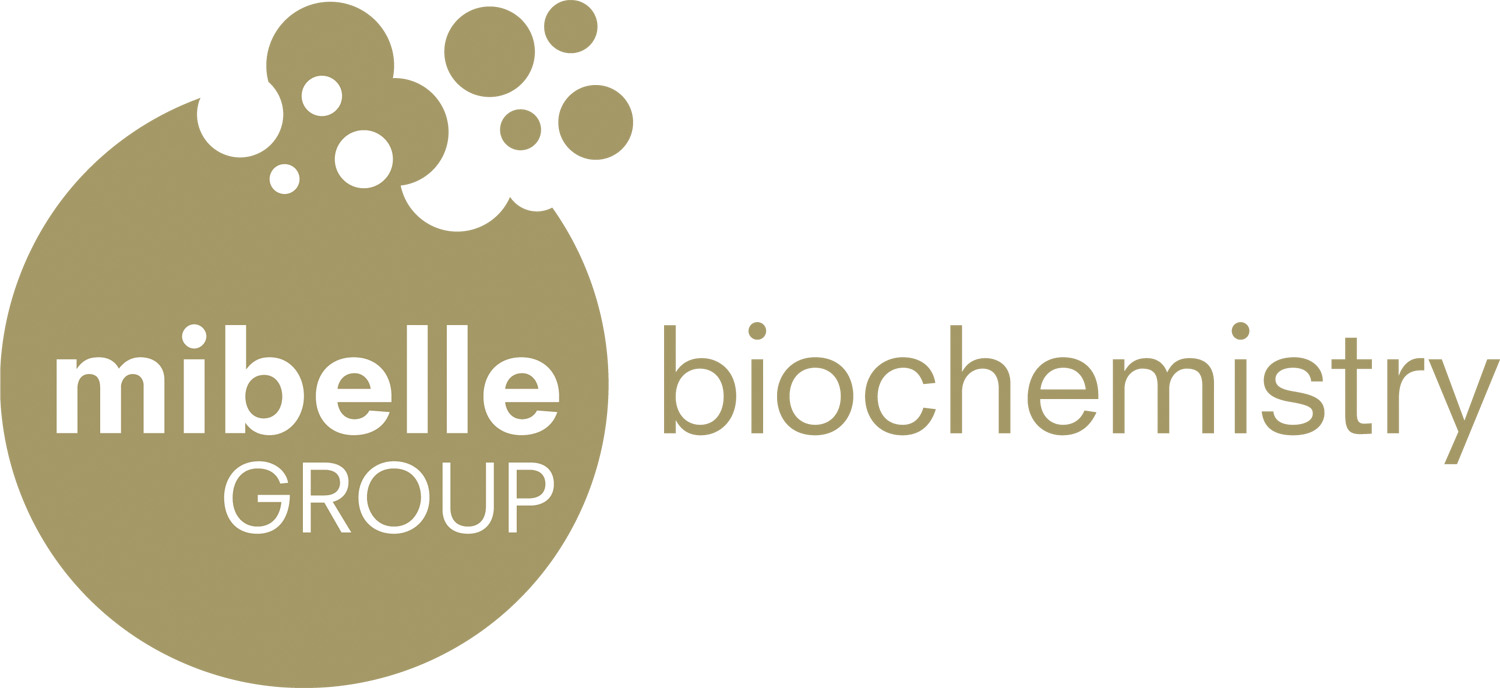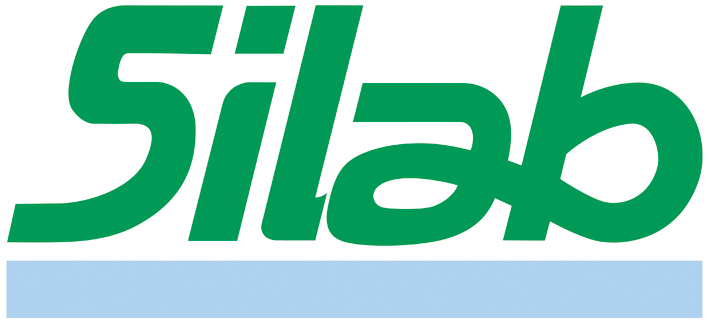The 20th anniversary of in-cosmetics was the biggest yet, covering more space with more exhibitors and attracting more visitors than ever before. But the quality was also there. SPC brings you the highlights.
While we’re reminded daily that the global economy is still struggling, it really didn’t look that way this year for the 7,807 people who flocked to Paris’ Porte de Versailles between 13-15 April. “We’re absolutely delighted with the outcome of in-cosmetics 2010. There was a great buzz about the show which is testament to the strength and resilience of the industry following last year’s recession,” commented exhibition director Lucy Gillam.
And it was a truly international event. Over 60% of visitors came from outside France and of these 71% were from Europe (EU), 9% from North America, 6% from non-EU Europe, 4% from the Middle East and Africa and 4% from southern or central America. There was a distinct air of eagerness among visitors and fortunately exhibitors did not disappoint, introducing a wide range of new materials and concepts.
A natural target
Though not so all pervasive as in the last couple of years, use of naturally-derived and natural ingredients continued to be a strong theme behind launches at this year’s show, with companies offering natural alternatives to almost every ingredient available. One interesting trend has been the emergence of niche natural ingredients, catering for very specific formulating needs.
Dr Straetmans for instance presented two new natural solubilizers – Symbio solv XC and Symbio muls WO. Symbio solv XC is described as a powerful PEG-free, 100% natural solubilizer blend, combining wetting agents and surfactants, and is said to match synthetic alternatives in terms of performance. The ingredient can be used in surfactant-based products such as shampoos and shower gels, and as a co-emulsifier in o/w emulsions. It also yields transparent solutions of most perfume oils and essential oils in aqueous solutions.
Symbio muls WO meanwhile is a natural w/o emulsifier blend that can be used at room temperature with excellent results, according to the company. Developed using sustainable resources, the blend is PEG and mineral oil-free and can be used in both conventional and natural cosmetics including baby care, sun care and skin protection formulations.
Providing a natural solvent alternative for polar ingredients, the company also launched Dermofeel TEC eco, an Ecocert-certified polar oil derived from 100% plant material that is said to be suitable for use as a deodorant active, while its new multifunctional ingredient Dermosoft PEA eco also provides deodorising benefits thanks to its light floral scent. The product can also be used as a natural fragrance component as well as featuring antimicrobial benefits, which can be used as an alternative to traditional preservatives.
Sabinsa Europe launched SabiLize Alpha and SabiLize Beta – the first being an antioxidant with natural preservative properties for use in colour cosmetics and the second a paler version for use in less highly pigmented formulations. Both products contain cinnamon, thyme, clove and lemongrass oils, and monolaurin while SabiLize Alpha also features garcinol. When incorporated into cream at 0.5% SabiLize Alpha and Beta were found to be effective against gram positive and negative bacteria, and yeast, and actually demonstrated better efficacy against Aspergillus niger than parabens.
“Right now, whichever development people we talk to, they all want to run away from parabens. They are looking for something natural,” said Ajax K Mohamed, vp of sales at Sabinsa. “Now people are looking for green chemistry, they are more cautious regarding the chemical side.”
For those searching for an alternative to synthetic cationic emulsifiers, Inolex was promoting its Emulsense HC for hair care and Emulsense SC for skin care. Derived via fermentation and plant materials and created using sustainable green chemistry principles, both products are Ecocert, COSMOS, NaTrue and NPA compliant and are free from petrochemicals, PEGs and palm oil. The newest addition to Desert Whale Jojoba’s range – a self-emulsifying blend of jojoba butter, shea butter, jojoba alcohol, potassium jojobate and propanediol called Jojoba Buttercreme – was also launched at the show. The addition of jojoba butter helps solve some of the issues associated with shea butter, according to the company’s US director of sales Kim G Swilpa: “With the self-emulsifying butter, the benefits are that it prevents crystalisation of the shea butter and it helps with the stability of shea butter.”
Swilpa added that visitors were requesting products with more than just a natural claim attached and that most were asking for “anything that’s natural and functional; the more functional the better”.
Greentech meanwhile harnessed the power of marine extracts in its two latest launches. XCell-30 is an anti-ageing active extracted from the red algae Halymenis durvillei, claimed to improve skin radiance and luminosity. The oligosaccharide active promises to extend the skin cell’s lifecycle and the proliferation of keratinocytes, allowing cells to communicate for longer and to protect themselves against external aggressors. The result, said Greentech’s marketing and communication manager, Paola Patriarca, is thicker, more flexible skin, which in turn looks younger and more radiant.
Also new from Greentech is Silidine, a marine active for vascular tonicity enhancement, or heavy legs syndrome. The active is a mix of oligosaccharides and essential oligoelements that helps to constrict dilated blood vessels, which are responsible for the sensation of heavy legs. The ingredient can also be used to help correct the appearance of rosacea, oedema and inflammation in a similar manner.

Lachemi Chemorgs unveiled three natural solutions for applications notoriously tricky to formulate within natural parameters. La’Deo is a 100% natural herbal antiperspirant that can be used in products with aluminium and phthalate-free claims, while La’Derm (also 100% natural) is said to protect the skin from UVA and UVB rays. Finally, La’Care contains moisturising herbal hair oils and offers formulators a chance to tap into the trend for Ayurvedic solutions.
For those after organic certification, there were plenty of materials to choose from. Cremer Care for example offered a new, 100% organic, Ecocert certified MCT (medium chain triglycerides) oil. The product consists of fatty acids derived from coconuts and is said to impart excellent emollient properties without causing shine.
ID Bio meanwhile introduced two new actives: Mang’inTense and PapayaSlim. Created to improve skin hydration, elasticity and firmness, Mang’inTense works by increasing the synthesis of hyaluronic acid, while PapayaSlim helps sculpt the silhouette by stimulating the cAMP and ZAG pathways in adipocytes, resulting in improved lipidic de-storage.
Sustainability & fairtrade
But while natural and green is almost becoming an entry point, expectations are increasing and sustainability has increasingly become a requirement. Jan Dekker highlighted its new green charter, which promotes ecological ingredients derived from responsibly harvested sources, certified ingredients from organic agriculture or naturally derived chemistry, fairtrade ingredients and sustainable ingredients that provide economic and social benefits to producers.
“Sustainability is not a management system, it is about setting goals and we are doing everything possible to be aware and act on it,” said Kelly Schockman, communications representative, Jan Dekker.
The company’s Florida Food Products division for instance, has gained Fair for Life certification from the Institute of Marketology (IMO), a Swiss non-for-profit NGO.
Earthoil was also offering a Fair for Life certified range of ingredients including menthol crystals, palmarosa oil, peppermint oil, spearmint oil and tea tree oil. The company said that it intended to add vegetable oils – coconut, shea, sunflower, avocado, jojoba and olive – to its Fair for Life portfolio.
Aldivia was promoting its Ubuntu Baobab Virgin Organic, a new product under the ethically traded Ubuntu umbrella. “Aldivia is one of the founding members of the Union for Ethical BioTrade (UEBT) and the Ubuntu range is part of that programme,” sales manager Marianne Cochennec told SPC. “It [Ubuntu Baobab Virgin Organic] is very rich in antioxidants – vitamin A and vitamin B – as well as vitamin E, and it’s a very stable oil. Also, this product is virgin organic. You can use refined products, but in refining you get rid of some of the antioxidants.”
Similarly, Beraca has joined UNESCO to support its International Year of Biodiversity project by launching its own Be Truly Natural campaign. The new campaign promotes the use of sustainable raw materials and the importance of buying ingredients from certified and environmentally responsible sources. The Brazilian company has also recently been awarded Ecocert certification for its AAA and ADA actives.
Featuring a series of initiatives designed to reduce its impact on the environment, Univar introduced its U+stainability programme at the 2010 event. “We already have a lot of initiatives under progress in all our countries and with U+stainability we are gathering together all the initiatives that we have; from carbon reduction to water treatment and waste reduction,” commented Philippe Villequey, sales & marketing manager, personal care. “On top of that we also want to work on the supply chain and making sure that’s sustainable.”
“Sustainability has been part of our corporate values for some years,” said Volker Oehl, European marketing manager, life sciences industry for Dow Corning, emphasising that it’s the bringing together of environment, economy and society.
“Sustainability is much broader than naturals. We asked silicone purchasers about their attitudes to sustainability and what was driving them and 80% said it was important when choosing a supplier. So if you’re not engaged in it you don’t stand a chance. And it’s not that people are embracing it for image or because of legislation but because they believe it’s the right thing to do or for a business benefit.” Oehl also pointed out that the level of new products with natural claims containing silicones is increasing. “So apart from the purists natural is a good trend for silicones. Naturals can be tacky but add a bit of silicone and the luxury is improved”.
Akzo Nobel added that its objective was to be in the top three on sustainability. “It’s happening from the top down. From plant level to sourcing technology, sustainability is a big driver for us and we’re in a unique position with both synthetic and natural polymer platforms,” said Laurie Marshall, global marketing manager at Akzo Nobel Surface Chemistry. “All major manufacturers are going the sustainable route – ie talking about it and wanting it. Fortunately we’re there already.”
Active targets
The use of plant stem cells is arguably the most talked about topic in skin care at the moment with suppliers and brands alike promoting the anti-ageing benefits of the technology. Swiss skin care specialist Mibelle introduced its third plant stem cell active, PhytoCellTec Alp Rose, following on from its grape and apple variants. PhytoCellTec Alp Rose is a powder based on the stem cells of alpine rose leaves, which are known for their ability to resist harsh environmental conditions such as cold, dryness and UV exposure. The new active is said to work on the skin’s barrier function, improving it and increasing the vitality of epidermal skin cells, as well as helping it cope with changes in climate. The result is improved skin cell regeneration and therefore improved quality of the skin barrier, according to Mibelle.
“We’ve had great feedback on Alp Rose – clients like the story,” commented Sandra Meister, marketing and sales coordinator, Mibelle. “When we started work on the PhtyoCellTec concept we had no idea how it would be received but consumers have really taken to the idea and we will certainly continue to invest in this area. Today natural products have to perform, you can’t just trade on being natural as everyone has something to offer in this area now. Natural products that perform are certainly the future.”

The company was also promoting two new ingredients that launched earlier this year. MAXnolia is a water-dispersable active powder based on magnolia bark extract, which claims to target ‘inflamm-aging’, a term that describes the chronic inflammation brought about when the skin’s immune system becomes less effective, resulting in the appearance of wrinkles and sagging skin. The new active is said to soothe this inflammation, reducing facial skin redness and improving the hydration of the skin, helping to plump out wrinkles, particularly around the eye contour.
Delentigo meanwhile combines an extract of Swiss garden cress and genistein, the biologically active form of soy isoflavone, and is said to target and lighten age spots by preventing and regulating the formation of two pigments – melanin and lipofuscin. The active is suitable for use in anti-ageing products and targeted age spot treatments and promises to create an even skin tone. Skin lightening was also a main theme at Jan Dekker, whose Nikkol Group introduced Zinc-Glycine Complex, a new mineral synthetic complex, claimed to promote oxidative protection through the production of metallothioneine and glutathione, which inhibits melanin production and thus helps prevent the appearance of age spots and problem pigmentation. The ingredient is also said to have a strong anti-ageing effect as it prevents inflammation between the dermis and epidermis.
Jan Dekker also introduced Maruzen Pharmaceuticals’ Silver Vine Extract BG30, described as a skin translucency enhancer. The ingredient contains silver vine extract, a plant native to East Asia and used in Japan to enhance skin translucency. The ingredient is claimed to increase moisture in the skin, inhibit the synthesis of melanin and provide antioxidant protection.
Provital launched two products for use in anti-ageing skin care. Zirhafirm contains triterpene derivatives from China’s Zizyphus spinosa and phytoecdysteriods from Rhaponticum carthamoides and works by activating the generation of laminin and collagens IV and VII, and inhibiting metalloproteinases in the DEJ, while Noline features the active ingredient macelignan (found in nutmeg), which acts on the cell differentiation process of the adipose tissue to boost the volume of tissue under the skin’s surface.
Iceland’s Sif Cosmetics, a subsidiary of Orf Genetics, selected the show to preview its DERMOkine brand of growth factors and cytokines for use in high end skin care products. Orf Genetics’ Orfeus system uses barley plants to synthesise its growth factors, which it says endows them with an unprecedented level of purity. It is available in three forms: as a fully formulated serum, a concentrated version and a freeze-dried powder version. According to business development manager Ágústa Jónsdóttir, Sif was one of few exhibitors offering such products and the only exhibitor from Iceland at in-cosmetics 2010. “In Iceland there are many naturals on the market,” explained Jónsdóttir. “You can get a nice effect from herbs, but we come from the technology side – we’re using biological science to imitate human skin. There are very few biotechnology companies at this show.”
Silab meanwhile focused its attention on a largely unexplored area of the skin called the reticular dermis. Research into this area has found that reticular fibroblasts are affected by extrinsic ageing such as UV irradiation, resulting in the dermis loosing its structure and the skin loosening and slackening. New active Retilactyl D is said to preserve the structural and supporting properties of this photo-aged skin, helping to remodel the contours of the face and improve density and firmness. Retilactyl D contains a-glucans and rhamnogalacturonans purified from black pepper berries, which are claimed to boost the capacities of adhesion, contraction and migration, as well as normalising the expression of the major specific matrix proteins of this supporting tissue.
“This is a very innovative active and represents a new approach to dermal ageing,” said Silab’s research engineer, David Boudier.
Dermal issues resulting from inadequate levels of microelements in the skin were addressed by first time exhibitor Nano Union’s range of microelement complexes. The Ukrainian company offered visitors options including Ag (silver) for cell regeneration, Cu (copper) for its anti-inflammatory properties and Zn (zinc) to help in the production of collagen and keratin. And France’s Burgundy Botanical Extracts focused on acne with the launch of DermoSorrel, which contains extracts of hibiscus, to reduce sebum levels and tone the skin without irritation.
Meanwhile United Cosmeceuticals used in-cosmetics to promote its DermatoPoietin-Plus, a mix of two peptides, recombinant interleukin-1 alpha and hexapeptide, that can be incorporated into anti-ageing, anti-cellulite and anti-hair loss products. Interleukin-1 alpha triggers fibroblasts to rebuild the fibrous network of the dermis as well as encouraging papilla cells in the hair bulb to produce factors required for hair growth. Meanwhile, the hexapeptide controls the release of interleukin-1 alpha.
While ISP Vincience is renowned for its innovative skin care ingredients it is now building on this experience for hair as, just like ageing skin, ageing hair becomes thinner and weaker. In Paris the company introduced BioHAIRapy, a line of three intelligent, functional ingredients designed to target key components of the hair follicle. Corn extract Capauxein is said to enhance cell signalling and communication, help improve hair vitality and optimise hair growth requirements. Yeast extract Dynagen targets the more mechanical properties of hair, enhancing the expression of proteins involved in the inner architecture of hair. And rice extract Protectagen is said to boost markers of stem cell activity and help natural defence against UV induced damage.
“These are new possibilities offering long-term real benefits for hair as well as immediate impact,” commented Nouha Domloge, R&D director of ISP’s global skin research center. There are said to be definite opportunities for leave-on conditioner and styling products, and ISP is also looking at whether the properties could be incorporated into a rinse-off applications. In an extension of the project, ISP is working on hair pigmentation.
In 2009 ISP had a lounge area rather than a traditional stand and this year decided on a different approach again, taking four small ‘pod’ sites, one for each of its key technology areas and launches. “This gives the customer the opportunity to have intimate time there,” commented Jim Mish, ISP senior vp/general manager personal care. “Once people start to understand how we’re communicating, the message is much clearer. This is also why we’ve sponsored the Innovation Zone – for the association with the term. The days of ISP having a massive single booth are over.”
DSM was also staking a claim on the hair care sector. “We’re very active in skin and sun but the big piece that has been missing is hair care,” said Jochen Klock, global business manager hair care for DSM. The company has now combined its active ingredients from skin care with its polymer technology to develop the Tilamar range of polymers for hair. “We’re looking at consumer needs and combining them with trend-oriented concepts for a unique focus,” said Klock. “We will also develop further concepts from the Tilamar brand.”
DSM was also offering a conceptual approach for male skin care, comprising a variety of ingredient concepts and product prototypes. “We like to be a solution provider for our customers, not just sell ingredients,” commented Manuela Pflaumbaum, area manager Europe, market development cosmetics, DSM. Adding a personal touch, company literature features male DSM employees modelling the various concepts.
Sun care
BASF focused on its sun care portfolio, introducing Tinosorb S Aqua, a new technology which brings oil-soluble UV filters into the water phase, without compromising on performance. The new polymer dispersion is said to create a more homogenous distribution of UV filters on the skin, as well as offering greater formulation flexibility as a lower UV filter concentration is needed in the phase to achieve high SPF protection. In addition, there is no negative influence to water resistance and no whitening effect when applied on the skin.
“We can now offer the benefits of a Tinosorb UV filter for the water phase, providing greater flexibility for formulators,” explained Ulrike Brandt, marketing manager for the range.
Croda meanwhile showcased Solaveil SpeXtra, a single inorganic sunscreen that can be used to formulate high SPF, broad spectrum sun protection without the need for multiple active ingredients. The dispersion contains a novel titanium dioxide which has been designed to deliver an optimal balance of UVA and UVB attenuation, and is claimed to have good skin feel as well as being transparent on skin. Formulations containing the ingredient as the sole filter are said to meet European Commission guidelines for UVA protection, whilst achieving the high SPF efficacy typically expected from more conventional grades of TiO2. An ecocert validated option is also available for formulators looking to create a natural sun care product.
“Sun care is not just about performance, it’s about aesthetics and with this product it’s possible to achieve this as well as great functionality,” said Sarah Millns, marketing communications co-ordinator, personal care & health care, Croda. Clariant introduced a sun care concept promising cost and time saving benefits as well as improved efficiency of formulations. “It looks at formulations not only in terms of filters but also optimisation, making it possible to decrease the level of filters but providing the same protection level,” commented Sonja Gehm, global marketing manager, industrial & consumer specialties at Clariant.

The company also introduced an Integrated Preservation concept offering a package of solutions to preserve and viscosify cosmetic formulations, with added cost efficiency. In the same way as the sun care concept the aim here is reduce the level of preservatives used but boost efficacy. As part of this concept, Velsan SC was introduced as a natural, synergistic aid that supports the industry’s move towards less preservatives in formulations. Sun and preservation were chosen as concepts for this year as these are areas where a lot of people have problems, said Gehm. For its next concepts Clariant will be looking at white label (low cost) and hair. “We’re a solution provider, not only a raw material provider.”
But not to forget the importance of new materials the company was also launching SilCare Silicone WSI, a w/o, w/s emulsifier for body lotions and creams, sunscreens and decorative cosmetics. This non-ethoxylated material is said to enhance the shine of pigments.
Formulation fixers
Innovative materials to help make the lives of cosmetic scientists that little bit simpler were also evident. Momentive launched Tospearl AQ microspheres, an extension of its Tospearl line of silicone resins. “This Tospearl product is coated with a hydrophilic material so it can be used in the water phase of a cosmetics formulation,” Sigfredo González, Momentive’s global program manager of PC silicone fluids technology told SPC, meaning that “you can now play with the sensorial feel in your aqueous phase and free up space in the oil phase”.
Also new from Momentive was Velvesil 034 organosilicone gel, designed to help disperse ingredients and improve sensorial feel without tackiness. González recommended Velvesil 034 for use in skin care, but added that it could be used in sun care to boost SPF. According to Momentive’s Mark W Davis (application development manager, EMEA & India), such dual-function materials are consistently popular with formulators. “It’s always an advantage to have more than one benefit – to bring two technologies in one product that will allow the formulator to achieve either a higher SPF, or a comparable SPF at a lower level so they can achieve cost savings,” he noted.
Despite being largely ingredient oriented, in-cosmetics still attracted exhibitors from end product businesses, including newly launched Swedish brand Actom. The product of a three party joint venture also involving contract formulator Mimesis and nanomaterials specialist Nanologica, Actom features three products each designed to address a particular sign of ageing: brown spots, mimetic wrinkles and wrinkles caused by the degeneration of collagen and elastin. The products, which contain specific peptides delivered via Nanologica’s meso porous silica system NLabInside are said to be ready to sell and Actom president Ove Landqvist told SPC that the brand was at the show in order to find distributors.
Innovabio turned its attention to beauty from within with the launch of DrinkBeauty! Collagen. The product utilises Innovabio’s NatCaps micro-encapsulation system and contains collagen from Rousselot as well as a blend of bioactive ingredients selected to help reverse signs of ageing.
in-cosmetics returns to Milan next year at the earlier date of 29-31 March.
Innovation Zone: shock of the new
The Innovation Zone has become a popular feature of in-cosmetics, showcasing the latest ingredients from exhibitors but also the latest beauty product launches, selected and presented by Mintel. There were three themes for products this year. Fountain of Youth looked at next-generation anti-ageing technology with an emphasis on products targeted at ‘digital natives’, men and more mature women. Beauty Garden was a fresh harvest of beauty products with actives derived from herbs, fruits and vegetables.
Finally, Instant Beauty was a selection of new launches highlighting convenience and speed for the ‘modern urban nomad’.
The popular beauty food tasting sessions were held twice daily, dishing up samples of the latest nutricosmetics, beauty foods and beverages from around the globe.
In Focus: fashion visionaries
The in-focus feature at in-cosmetics is the creation of product concepts designed to substantiate the ingredients and technologies of the exhibiting companies.
This year’s theme was fashion and visitors were invited on an inspirational and sensorial journey through textures, colours and fragrances grouped along sensuous, seductive and natural lines, with companies working together on different projects.
For in-focus organiser Jacques Sebag the idea for fashion as the focus was a comparison with the way people feel naked without their cosmetics and skin care. “It’s part of the dressing process,” he said. But while fashion may sound like an obvious subject for beauty Sebag feels there is very rarely any actual connection between fashion designers and cosmetics laboratories.
“I like what in-focus is triggering inside some of the organisations and laboratories,” said Sebag. “For example, with Merck and Gattefossé it seems to be encouraging different ways of working in partnership. It’s almost a chemical reaction. It’s triggering momentum and inspiring new products. It’s not about the function of an ingredient but about how to use an ingredient in a formula.
“Companies are under increasing pressure to react to markets but research also needs freedom from constraints to explore new areas. If you are always answering the needs of the market you drain your creativity, just creating rather than being innovative. Here instead of being interested in the molecular weight or pH of something you envisage what you can do with it.
“I feel in-focus gets better every year and we’ve had good feedback from participants this year. In the beginning it was very new and people didn’t know what to expect but some visitors now treat this sector as a focal point – it works like a research project.”
Symrise had products for each of the sensuous, seductive and natural concepts, each incorporating a fragrance. Merck working with Gattefossé and Strand Cosmetics had developed four interesting products inspired by liquid metal while Créations Couleurs featured chameleon-like colour change lip gloss that adapts to skin temperature and eyeshadows with a silky touch based on silica. Stéarinerie-Dubois created a film for direct application to the skin, described as forming a jewel for the body as a membrane does for Gore-Tex. “It’s a more comfortable version of Paco Rabanne’s metal plaque dresses,” explained the company.







